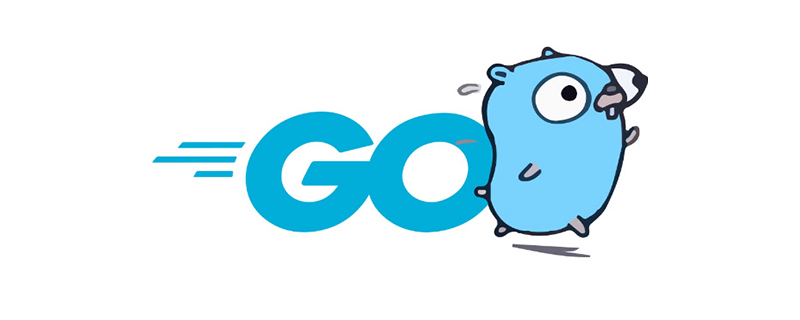
go语言的排序思路和 c 和 c++ 有些差别。 c 默认是对数组进行排序, c++ 是对一个序列进行排序, go 则更宽泛一些,待排序的可以是任何对象, 虽然很多情况下是一个 slice (分片, 类似于数组),或是包含 slice 的一个对象。
排序(接口)的三个要素:
待排序元素个数 n ;
第 i 和第 j 个元素的比较函数 cmp ;
第 i 和 第 j 个元素的交换 swap ;
乍一看条件 3 是多余的, c 和 c++ 都不提供 swap 。 c 的 qsort 的用法: qsort(data, n, sizeof(int), cmp_int); data 是起始地址, n 是元素个数, sizeof(int) 是每个元素的大小, cmp_int 是一个比较两个 int 的函数。
c++ 的 sort 的用法: sort(data, data+n, cmp_int); data 是第一个元素的位置, data+n 是最后一个元素的下一个位置, cmp_int 是比较函数。
基本类型 int 、 float64 和 string 的排序
升序排序
对于 int 、 float64 和 string 数组或是分片的排序, go 分别提供了 sort.Ints() 、 sort.Float64s() 和 sort.Strings() 函数, 默认都是从小到大排序。(没有 sort.Float32s() 函数, me 颇有点奇怪。)
package main import ( "fmt" "sort") func main() { intList := [] int {2, 4, 3, 5, 7, 6, 9, 8, 1, 0} float8List := [] float64 {4.2, 5.9, 12.3, 10.0, 50.4, 99.9, 31.4, 27.81828, 3.14} // float4List := [] float32 {4.2, 5.9, 12.3, 10.0, 50.4, 99.9, 31.4, 27.81828, 3.14} // no function : sort.Float32s stringList := [] string {"a", "c", "b", "d", "f", "i", "z", "x", "w", "y"} sort.Ints(intList) sort.Float64s(float8List) sort.Strings(stringList) fmt.Printf("%v\n%v\n%v\n", intList, float8List, stringList) }
降序排序
int 、 float64 和 string 都有默认的升序排序函数, 现在问题是如果降序如何 ? 有其他语言编程经验的人都知道,只需要交换 cmp 的比较法则就可以了, go 的实现是类似的,然而又有所不同。
go 中对某个 Type 的对象 obj 排序, 可以使用 sort.Sort(obj) 即可,就是需要对 Type 类型绑定三个方法 : Len() 求长度、 Less(i,j) 比较第 i 和 第 j 个元素大小的函数、 Swap(i,j) 交换第 i 和第 j 个元素的函数。
sort 包下的三个类型 IntSlice 、 Float64Slice 、 StringSlice 分别实现了这三个方法, 对应排序的是 [] int 、 [] float64 和 [] string。如果期望逆序排序, 只需要将对应的 Less 函数简单修改一下即可。
go 的 sort 包可以使用 sort.Reverse(slice) 来调换 slice.Interface.Less ,也就是比较函数,所以, int 、 float64 和 string 的逆序排序函数可以这么写:
package main import ( "fmt" "sort") func main() { intList := [] int {2, 4, 3, 5, 7, 6, 9, 8, 1, 0} float8List := [] float64 {4.2, 5.9, 12.3, 10.0, 50.4, 99.9, 31.4, 27.81828, 3.14} stringList := [] string {"a", "c", "b", "d", "f", "i", "z", "x", "w", "y"} sort.Sort(sort.Reverse(sort.IntSlice(intList))) sort.Sort(sort.Reverse(sort.Float64Slice(float8List))) sort.Sort(sort.Reverse(sort.StringSlice(stringList))) fmt.Printf("%v\n%v\n%v\n", intList, float8List, stringList)}
深入理解排序
sort 包中有一个 sort.Interface 接口,该接口有三个方法 Len() 、 Less(i,j) 和 Swap(i,j) 。 通用排序函数 sort.Sort 可以排序任何实现了 sort.Inferface 接口的对象(变量)。
对于 [] int 、[] float64 和 [] string 除了使用特殊指定的函数外,还可以使用改装过的类型 IntSclice 、 Float64Slice 和 StringSlice , 然后直接调用它们对应的 Sort() 方法;因为这三种类型也实现了 sort.Interface 接口, 所以可以通过 sort.Reverse 来转换这三种类型的 Interface.Less 方法来实现逆向排序, 这就是前面最后一个排序的使用。
下面使用了一个自定义(用户定义)的 Reverse 结构体, 而不是 sort.Reverse 函数, 来实现逆向排序。
package main import ( "fmt" "sort") // 自定义的 Reverse 类型type Reverse struct { sort.Interface // 这样, Reverse 可以接纳任何实现了 sort.Interface (包括 Len, Less, Swap 三个方法) 的对象} // Reverse 只是将其中的 Inferface.Less 的顺序对调了一下func (r Reverse) Less(i, j int) bool { return r.Interface.Less(j, i)} func main() { ints := []int{5, 2, 6, 3, 1, 4} // 未排序 sort.Ints(ints) // 特殊排序函数, 升序 fmt.Println("after sort by Ints:\t", ints) // [1 2 3 4 5 6] doubles := []float64{2.3, 3.2, 6.7, 10.9, 5.4, 1.8} sort.Float64s(doubles) // float64 排序版本 1 fmt.Println("after sort by Float64s:\t", doubles) // [1.8 2.3 3.2 5.4 6.7 10.9] strings := []string{"hello", "good", "students", "morning", "people", "world"} sort.Strings(strings) fmt.Println("after sort by Strings:\t", strings) // [good hello mornig people students world] ipos := sort.SearchInts(ints, -1) // int 搜索 fmt.Printf("pos of 5 is %d th\n", ipos) // 并不总是正确呀 ! (搜索不是重点) dpos := sort.SearchFloat64s(doubles, 20.1) // float64 搜索 fmt.Printf("pos of 5.0 is %d th\n", dpos) // 并不总是正确呀 ! fmt.Printf("doubles is asc ? %v\n", sort.Float64sAreSorted(doubles)) doubles = []float64{3.5, 4.2, 8.9, 100.98, 20.14, 79.32} // sort.Sort(sort.Float64Slice(doubles)) // float64 排序方法 2 // fmt.Println("after sort by Sort:\t", doubles) // [3.5 4.2 8.9 20.14 79.32 100.98] (sort.Float64Slice(doubles)).Sort() // float64 排序方法 3 fmt.Println("after sort by Sort:\t", doubles) // [3.5 4.2 8.9 20.14 79.32 100.98] sort.Sort(Reverse{sort.Float64Slice(doubles)}) // float64 逆序排序 fmt.Println("after sort by Reversed Sort:\t", doubles) // [100.98 79.32 20.14 8.9 4.2 3.5]}
sort.Ints / sort.Float64s / sort.Strings 分别来对整型/浮点型/字符串型分片或是叫做片段,或是不严格滴说是数组,进行排序。然后是有个测试是否有序的函数。还有分别对应的 search 函数,不过,发现搜索函数只能定位到如果存在的话的位置,不存在的话,位置就是不对的。
关于一般的数组排序,程序中显示了,有 3 种方法!目前提供的三种类型 int,float64 和 string 呈现对称的,也就是你有的,对应的我也有。
关于翻转排序或是逆向排序,就是用个翻转结构体,重写 Less 函数即可。上面的 Reverse 是个通用的结构体。
上面说了那么多, 只是对基本类型进行排序, 该到说说 struct 结构体类型的排序的时候了, 实际中这个用得到的会更多。
结构体类型的排序
结构体类型的排序是通过使用 sort.Sort(slice) 实现的, 只要 slice 实现了 sort.Interface 的三个方法就可以。 虽然这么说,但是排序的方法却有那么好几种。首先一种就是模拟排序 [] int 构造对应的 IntSlice 类型,然后对 IntSlice 类型实现 Interface 的三个方法。
结构体排序方法 1
package main import ( "fmt" "sort") type Person struct { Name string // 姓名 Age int // 年纪} // 按照 Person.Age 从大到小排序type PersonSlice [] Person func (a PersonSlice) Len() int { // 重写 Len() 方法 return len(a)}func (a PersonSlice) Swap(i, j int){ // 重写 Swap() 方法 a[i], a[j] = a[j], a[i]}func (a PersonSlice) Less(i, j int) bool { // 重写 Less() 方法, 从大到小排序 return a[j].Age < a[i].Age} func main() { people := [] Person{ {"zhang san", 12}, {"li si", 30}, {"wang wu", 52}, {"zhao liu", 26}, } fmt.Println(people) sort.Sort(PersonSlice(people)) // 按照 Age 的逆序排序 fmt.Println(people) sort.Sort(sort.Reverse(PersonSlice(people))) // 按照 Age 的升序排序 fmt.Println(people) }
这完全是一种模拟的方式,所以如果懂了 IntSlice 自然就理解这里了,反过来,理解了这里那么 IntSlice 那里也就懂了。
结构体排序方法 2
方法 1 的缺点是 : 根据 Age 排序需要重新定义 PersonSlice 方法,绑定 Len 、 Less 和 Swap 方法, 如果需要根据 Name 排序, 又需要重新写三个函数; 如果结构体有 4 个字段,有四种类型的排序,那么就要写 3 × 4 = 12 个方法, 即使有一些完全是多余的, 仔细思量一下,根据不同的标准 Age 或是 Name, 真正不同的体现在 Less 方法上,所以, me 们将 Less 抽象出来, 每种排序的 Less 让其变成动态的,比如下面一种方法。
package main import ( "fmt" "sort") type Person struct { Name string // 姓名 Age int // 年纪} type PersonWrapper struct { people [] Person by func(p, q * Person) bool} func (pw PersonWrapper) Len() int { // 重写 Len() 方法 return len(pw.people)}func (pw PersonWrapper) Swap(i, j int){ // 重写 Swap() 方法 pw.people[i], pw.people[j] = pw.people[j], pw.people[i]}func (pw PersonWrapper) Less(i, j int) bool { // 重写 Less() 方法 return pw.by(&pw.people[i], &pw.people[j])} func main() { people := [] Person{ {"zhang san", 12}, {"li si", 30}, {"wang wu", 52}, {"zhao liu", 26}, } fmt.Println(people) sort.Sort(PersonWrapper{people, func (p, q *Person) bool { return q.Age < p.Age // Age 递减排序 }}) fmt.Println(people) sort.Sort(PersonWrapper{people, func (p, q *Person) bool { return p.Name < q.Name // Name 递增排序 }}) fmt.Println(people) }
方法 2 将 [] Person 和比较的准则 cmp 封装在了一起,形成了 PersonWrapper 函数,然后在其上绑定 Len 、 Less 和 Swap 方法。 实际上 sort.Sort(pw) 排序的是 pw 中的 people, 这就是前面说的, go 的排序未必就是针对的一个数组或是 slice, 而可以是一个对象中的数组或是 slice 。
结构体排序方法 3
me 赶脚方法 2 已经很不错了, 唯一一个缺点是,在 main 中使用的时候暴露了 sort.Sort 的使用,还有就是 PersonWrapper 的构造。 为了让 main 中使用起来更为方便, me 们可以再简单的封装一下, 构造一个 SortPerson 方法, 如下:
package main import ( "fmt" "sort") type Person struct { Name string // 姓名 Age int // 年纪} type PersonWrapper struct { people [] Person by func(p, q * Person) bool} type SortBy func(p, q *Person) bool func (pw PersonWrapper) Len() int { // 重写 Len() 方法 return len(pw.people)}func (pw PersonWrapper) Swap(i, j int){ // 重写 Swap() 方法 pw.people[i], pw.people[j] = pw.people[j], pw.people[i]}func (pw PersonWrapper) Less(i, j int) bool { // 重写 Less() 方法 return pw.by(&pw.people[i], &pw.people[j])} func SortPerson(people [] Person, by SortBy){ // SortPerson 方法 sort.Sort(PersonWrapper{people, by})} func main() { people := [] Person{ {"zhang san", 12}, {"li si", 30}, {"wang wu", 52}, {"zhao liu", 26}, } fmt.Println(people) sort.Sort(PersonWrapper{people, func (p, q *Person) bool { return q.Age < p.Age // Age 递减排序 }}) fmt.Println(people) SortPerson(people, func (p, q *Person) bool { return p.Name < q.Name // Name 递增排序 }) fmt.Println(people) }
在方法 2 的基础上构造了 SortPerson 函数,使用的时候传过去一个 [] Person 和一个 cmp 函数。
结构体排序方法 4
下面是另外一个实现思路, 可以说是方法 1、 2 的变体。
package main import ( "fmt" "sort") type Person struct { Name string Weight int} type PersonSlice []Person func (s PersonSlice) Len() int { return len(s) }func (s PersonSlice) Swap(i, j int) { s[i], s[j] = s[j], s[i] } type ByName struct{ PersonSlice } // 将 PersonSlice 包装起来到 ByName 中 func (s ByName) Less(i, j int) bool { return s.PersonSlice[i].Name < s.PersonSlice[j].Name } // 将 Less 绑定到 ByName 上 type ByWeight struct{ PersonSlice } // 将 PersonSlice 包装起来到 ByWeight 中func (s ByWeight) Less(i, j int) bool { return s.PersonSlice[i].Weight < s.PersonSlice[j].Weight } // 将 Less 绑定到 ByWeight 上 func main() { s := []Person{ {"apple", 12}, {"pear", 20}, {"banana", 50}, {"orange", 87}, {"hello", 34}, {"world", 43}, } sort.Sort(ByWeight{s}) fmt.Println("People by weight:") printPeople(s) sort.Sort(ByName{s}) fmt.Println("\nPeople by name:") printPeople(s) } func printPeople(s []Person) { for _, o := range s { fmt.Printf("%-8s (%v)\n", o.Name, o.Weight) }}
更多go语言知识请关注PHP中文网go语言教程栏目。
以上就是go语言中的排序讲解的详细内容,更多请关注24课堂在线网其它相关文章!






